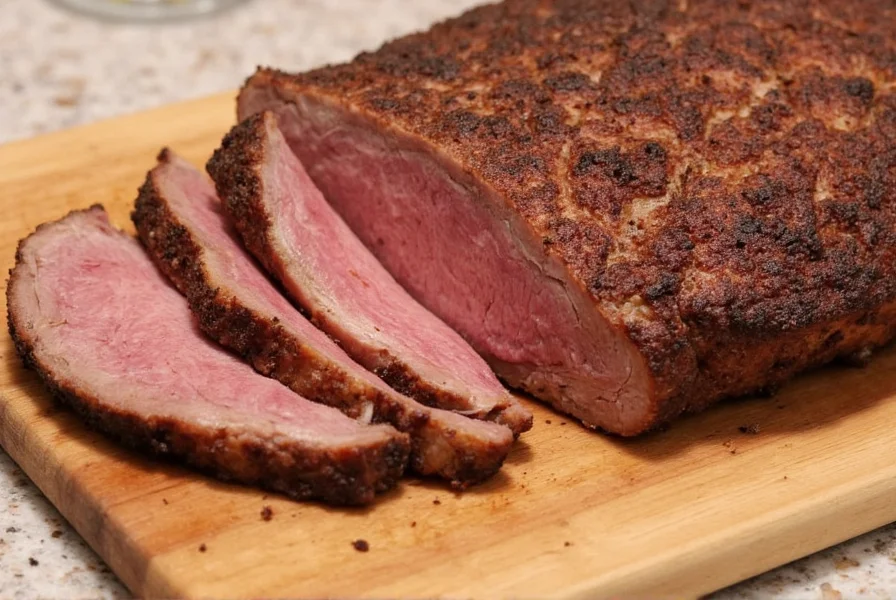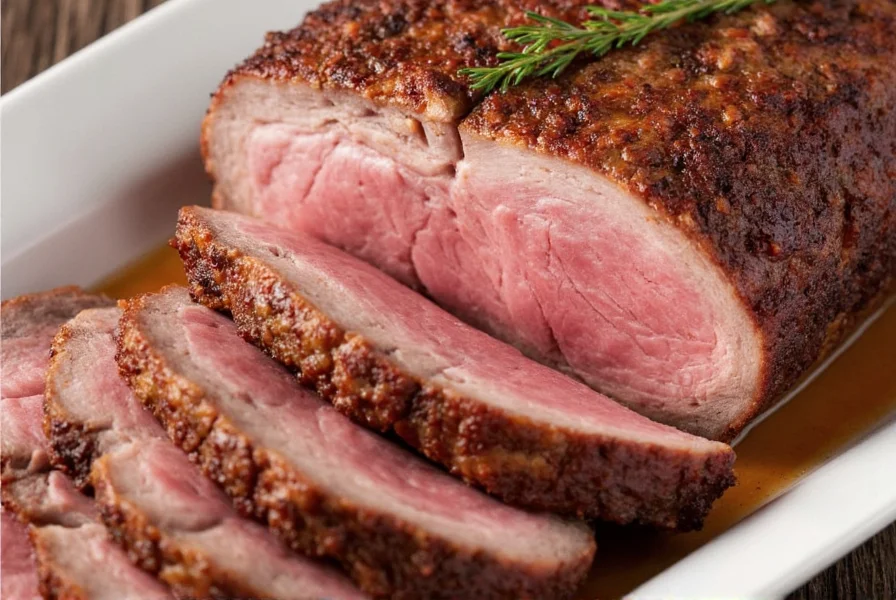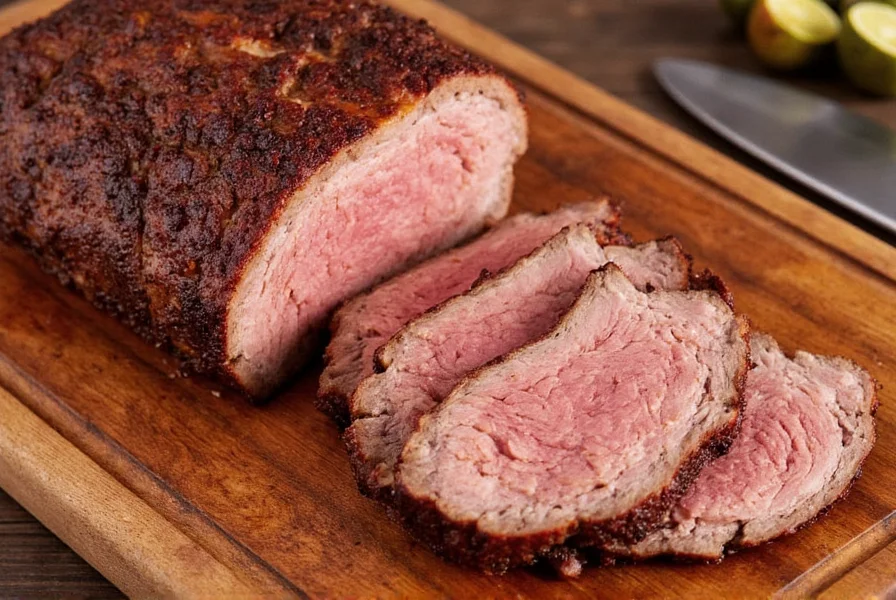| Brisket Weight | Oven Temperature | Estimated Cooking Time | Internal Temperature Goal |
|---|---|---|---|
| 3–4 lbs | 275°F (135°C) | 3–4 hours | 195°F–205°F (90°C–96°C) |
| 5–6 lbs | 250°F (120°C) | 5–6 hours | 195°F–205°F (90°C–96°C) |
| 7–8 lbs | 225°F (107°C) | 8–10 hours | 195°F–205°F (90°C–96°C) |
Always verify doneness with a meat thermometer. The internal temperature must reach 195°F–205°F (90°C–96°C) for optimal tenderness. Cooking time varies by weight and oven type—never rely solely on time estimates.
How long does it take to cook a 5 lb brisket at 250°F?
A 5 lb brisket typically requires 5–6 hours at 250°F. Always verify doneness with a meat thermometer—the internal temperature should reach 195°F–205°F for optimal tenderness. Larger or thicker cuts may need additional time, so check after 5 hours.
Why is my brisket still tough after reaching 200°F?
Toughness at 200°F usually indicates insufficient cooking time. Brisket collagen needs extended low-heat exposure to fully break down. Continue cooking until it reaches 203°F–205°F and passes the "probe test" (thermometer slides in with no resistance). Resting for 1+ hours also improves tenderness.
Can I reduce brisket cooking time by increasing oven temperature?
Raising the temperature beyond 275°F risks drying out the meat. While high-heat roasting (325°F–350°F) cuts time to 3–4 hours, it sacrifices the tender texture achieved through low-and-slow cooking. For best results, prioritize patience over speed—225°F–250°F is ideal for most home ovens.
How do I adjust cooking time for a convection oven?
Reduce convection oven temperatures by 25°F (e.g., set to 225°F instead of 250°F) and monitor closely. Convection speeds up cooking by 20–30%, so check 1–2 hours earlier than standard guidelines. Always rely on internal temperature (195°F–205°F) rather than time alone.
Does wrapping brisket in foil shorten cooking time?
Yes—wrapping ("the Texas crutch") typically reduces total cooking time by 1–2 hours by trapping steam and accelerating collagen breakdown. Wrap when internal temperature hits 160°F–170°F, then return to oven until reaching 195°F–205°F. This method also prevents excessive smoke absorption.
Pro Tips for Prepping Your Brisket Before the Oven
Before you even think about turning on the oven, here's how to set your brisket up for success:
- Trim the fat cap: Leave about ¼ inch of fat to help keep the meat moist during the long cook.
- Dry brine or wet marinade? Both work well. Dry brining with salt and spices enhances texture, while a wet marinade (like beer, vinegar, or citrus-based) adds moisture and flavor.
- Let it rest at room temperature: Take the brisket out of the fridge 30–60 minutes before cooking to ensure even cooking.

Oven Methods: Low & Slow vs. High Heat Roasting
Low & Slow Method
- Temperature: 225°F–250°F (107°C–120°C)
- Cook Time: 8–12 hours (depending on size)
- Result: Meltingly tender, fall-apart texture
- Best For: Weekend cooking, when you can walk away and let the oven do the work
High Heat Roasting Method
- Temperature: 325°F–350°F (163°C–177°C)
- Cook Time: 3–4 hours
- Result: Crispy bark, slightly chewier texture
- Best For: Quick meals or when you want a seared exterior

Resting Your Brisket: The Final Step to Juicy Success
You've waited hours for that perfect cook—now don't rush the finish line! Resting allows juices to redistribute, ensuring each slice is moist and flavorful.
- Time: 30–60 minutes
- Method: Wrap in foil or butcher paper, then place in a cooler or insulated container (without ice).
- Bonus tip: If you have extra time, wrap the brisket in towels and leave it in the oven turned off—the residual heat will keep it warm without overcooking.
Buying Guide: Choosing the Right Brisket and Spice Tools
Types of Brisket Cuts
| Type | Description | Best For |
|---|---|---|
| Flat Cut | Leaner, more uniform shape, easier to slice | Everyday meals, slicing for sandwiches |
| Packaged Point Cut | Fattier, richer flavor, more marbling | Shredded dishes, high-end presentations |
| Whole Brisket (Flat + Point) | Larger cut, offers versatility | Feeding a crowd, carving like a pro |
Essential Spice Tools
- Manual Spice Grinder
- Use Case: Freshly ground peppercorns, cumin seeds, etc.
- Advantage: Better aroma and potency than pre-ground versions
- Mortar and Pestle
- Use Case: Crushing whole spices or making small batches of rubs
- Advantage: Releases essential oils and intensifies flavors
- Meat Thermometer
- Use Case: Monitoring internal temperature for doneness
- Advantage: Prevents undercooking or overcooking
- Wire Cooling Rack
- Use Case: Resting meat without steaming the crust
- Advantage: Keeps bark crispy and improves texture












 浙公网安备
33010002000092号
浙公网安备
33010002000092号 浙B2-20120091-4
浙B2-20120091-4